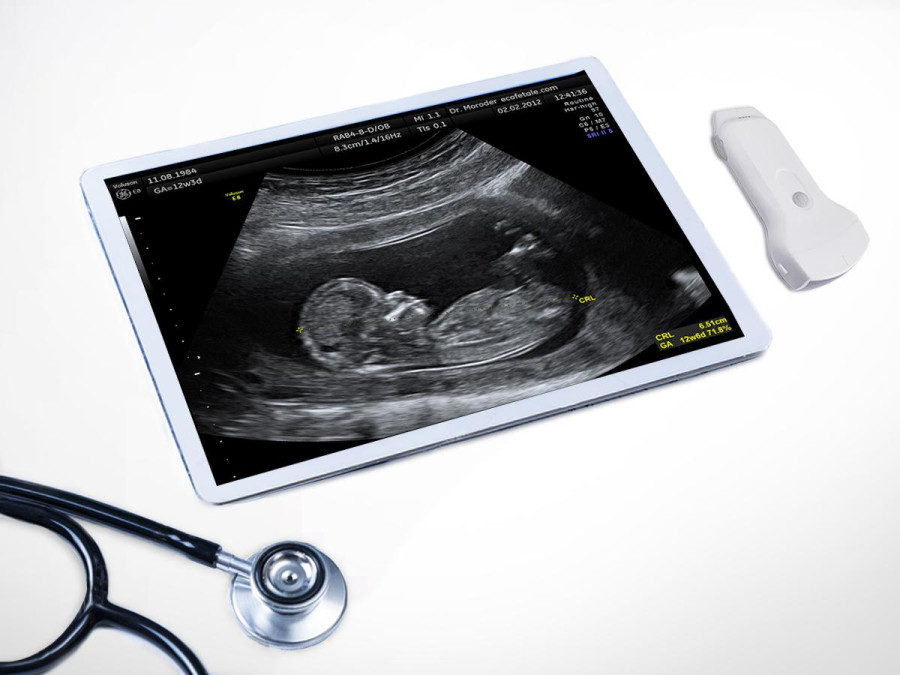Columns
Enter handheld ultrasound
Ultrasound has not seen widespread use in developing countries due to the high cost of the machine.
Nishesh Tiwari
Ultrasonography (USG), or ultrasound, is a widely used clinical imaging system for quick diagnosis and treatment. Allowing doctors to see images of organs inside the human body, ultrasound helps doctors diagnose various diseases, traumatic injuries, fetal development, and abnormalities in pregnancy. The advantage of ultrasound is that, unlike X-ray imaging, it does not emit harmful ionising radiation. It relies on sound waves to create images and is safer in comparison. Patients and medical practitioners are not exposed to radiation while using this device. It is also a non-invasive and painless diagnostic technology. There has been considerable interest in using this technology as it requires very little infrastructure, training, and maintenance compared to other imaging systems. Nevertheless, ultrasound has not seen widespread use in developing countries due to the high cost of the machine.
Outcomes of technology advancement
The advances in hardware and software have made ultrasound devices more compact, affordable, and easier to use, with good image quality and performance. Pocket-sized, handheld ultrasound devices first appeared on the market in the late 1990s. Since then, they have been upgraded numerous times to provide better performance and image quality. These handheld ultrasound devices are cheaper and cost less than one-fifth of the price of conventional cart-based ultrasound machines. The low cost of these ultrasounds has made them popular worldwide, and physicians use them as point-of-care ultrasound (PoCUS) in hospitals and clinics.
Handheld ultrasound is a lightweight, compact, and portable form of ultrasound technology. It easily fits into physicians’ pockets and saves time in emergencies. It also allows physicians to get first-hand information about patients, and then refer them for a standard ultrasound test based on the pre-diagnosis report. Due to the inherent advantages of handheld ultrasound devices, physicians have been using them as pre-diagnostic tools, just like a stethoscope. Recognising the usefulness of handheld ultrasound, the International Medical Community has also started referring to it as an e-stethoscope. Handheld ultrasound as an e-stethoscope could usher in a new era in the healthcare sector. It would arm physicians with quick, easy, and harmless means of visually observing the ecosystem of internal organs functioning in real-time to provide a more accurate diagnosis.
Potentiality in Nepal
People in rural Nepal need to travel for a day or two and splurge almost a month’s income to access ultrasound machines. Many health posts are not properly equipped with ultrasound technologies. For instance, one of Bajura’s busiest health posts, where nearly 15 babies are delivered in a month, lacks ultrasound capabilities. The unavailability of this much-needed technology puts the lives of expectant mothers at risk. One of the Sustainable Development Goals (SDGs) is to reduce the global Maternal Mortality Ratio (MMR) to less than 70 per 100,000 live births by 2030. The government of Nepal has also committed to this. However, the country’s current MMR is 186 per 100,000 live births, which is quite high compared to developed countries and the SDGs target.
The geographical and economic conditions of rural Nepal largely prevent cart-based conventional ultrasound systems from reaching these areas. It is risky for pregnant women to travel to the nearest health post due to hostile conditions such as terrain, wildlife, and environmental hazards. Medical practitioners can carry portable ultrasounds to the homes of pregnant women and perform examinations. It will aid in detecting complications promptly and treating them before they become deadly. Patients can be referred to the district or central hospitals for further medical evaluations or procedures when required. It will save the lives of many expectant mothers and contribute to the overall reduction of MMR.
The cost of an ultrasound exam is high today because ultrasound machines are quite expensive. If ultrasound becomes affordable, the cost of ultrasound exams should also drop significantly. People in rural areas will be in a better position to afford more affordable ultrasound exams. Consequently, more people would go for regular checkups, diseases would be timely diagnosed, and necessary remedial actions could be taken, potentially saving lives.
Similarly, even in urban areas where we have more patients and only a few standard ultrasound systems in hospitals, this could prove to be a handy tool to provide a timely diagnosis. Many hospitals require patients to book the standard ultrasound test 24 hours in advance due to the high volume of tests to be performed every day. With handheld ultrasound used as a pre-diagnosis tool, only those patients who require further examination can be assigned for the standard ultrasound test, thus reducing the traffic in the standard ultrasound room. Elderly patients disproportionately face obstacles to health care because of their serious medical conditions and transportation challenges. Handheld ultrasound devices can be carried to their bedside in hospitals, clinics, nursing homes, or homes, which will increase evaluation and potential for care to these patients.
Necessary government efforts
Handheld ultrasound will be a boon for our healthcare system if we make ultrasound scans affordable and accessible to more people, regardless of their economic status or geographic location. Nepal’s constitution recognises the right to equal access to health services for each citizen. However, this technology is yet to formally enter Nepal’s market, and its widespread use has been hindered due to the lack of a central policy or interest from the Ministry of Health and Population. The incoming government should seize this opportunity to formulate a clear policy regarding handheld ultrasound, including recognising them as a safe diagnostic device, removing restrictions and setting clear guidelines for their import and sale, and facilitating their use at hospitals and health posts by registered medical practitioners as a pre-diagnostic tool.
The new government should consider using handheld ultrasound for the potential revolution it can herald regarding healthcare access to rural and geographically disadvantaged communities in Nepal so that many people can benefit from recent technological advancements and help bridge gaps.




 15.12°C Kathmandu
15.12°C Kathmandu















